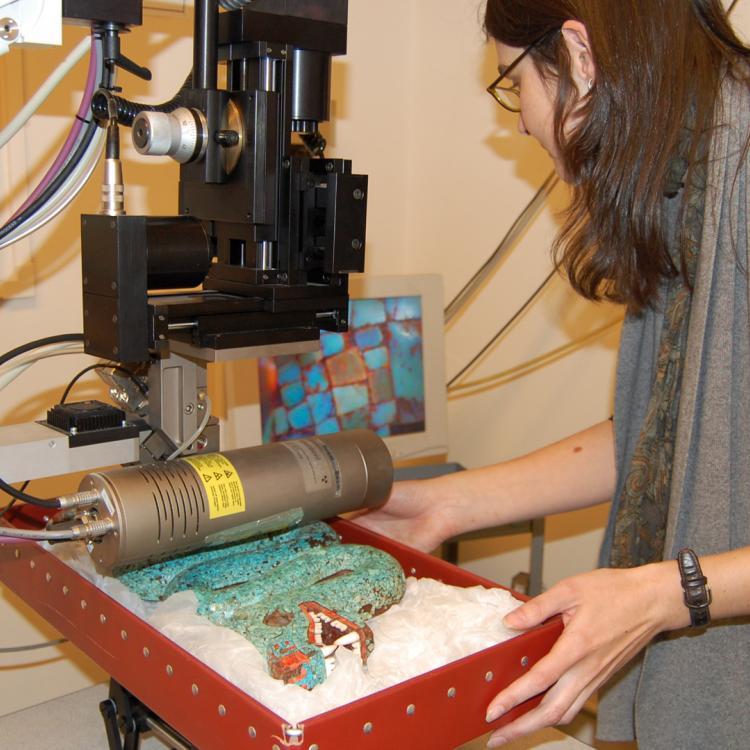Contact us
Email:
science@britishmuseum.org
The Department of Scientific Research
The British Museum
Great Russell Street
London WC1B 3DG
The Department of Scientific Research combines in-house scientific investigation with Museum priorities.
We are an interdisciplinary group of specialists and we work collaboratively across the Museum to:
- Support the care of the collection
- Undertake new programmes of research
- Communicate the results of our research to the widest possible audience
We work from an extensive suite of laboratories and use a wide range of microscopy and imaging techniques, vibrational spectroscopy, elemental and molecular analysis. Our research is supported by access to extensive reference collections of organic and inorganic materials.
We help to ensure the long-term preservation of the Museum's Collection through the use of innovative techniques such as lasers in conservation treatment and X-radiography to probe the structural integrity of objects. We have also pioneered new approaches to understand how objects deteriorate.
We are committed to disseminating our research and publish a range of books and articles each year. You can watch films and read articles about the work of Scientific Research at the Museum, and browse our newsletter archive.
Accessing the collection
The Museum makes collection material available for scientific examination and analysis by external researchers.
Find out how you can apply to access collection material for external scientific research.
History of scientific research on the collection
18th century
1919–20
1924
1926
1947
1962
1970s and 80s
2014 – now
Research
Research is the foundation of the department and is carried out by scientists using a variety of techniques and specialist technology. It focuses on manufacturing technologies and the different types of materials used to make the objects in the collection. These include stone, glass, metals, ceramics, minerals, gems and pigments, and organics.
A range of analytical techniques is used. They reveal what objects are made of, how they were made, when and where they were made and what this tells us about their history and use. They also reveal facts about the conservation process.
Conservation research includes the study of the deterioration and alteration of artefacts or the materials they are made from. The results of such research allows new or improved conservation methods to be developed.
Other work involves investigating and evaluating the materials used in conservation, storage and display, as well as defining and implementing strategies for preventive conservation. This is vital for ensuring the future of the collection.
Understanding the collection
Understanding the collection
Scientific investigation results in a deeper understanding of the collection, raising broader and deeper questions and helping to reveal the motivations of the people who produced the objects.
Our collection research programmes investigate the 'lives' of objects, including the origin and types of resources and their selection and procurement, technological innovation and process, and the ways in which objects were used and modified.
Scientific Research newsletters
Take a look at the British Museum Science illustrated newsletters, presenting the work of the Scientific Research Department.
The newsletters include information about our investigative techniques, work in our laboratories, as well as the wider Museum and beyond.
The short segments are written by scientists and other specialists from across the British Museum, but also by external scholars who have collaborated with the Museum, or researched aspects of the collection.





